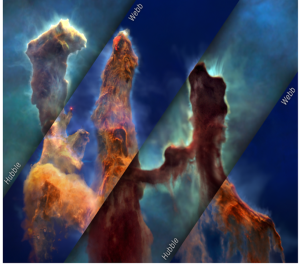Earth Educators Rendezvous with Infiniscope and Tour It
At the Earth Educator’s Rendezvous, held July 15-19, 2024, NASA’s Infiniscope project from Arizona State University hosted a two-day workshop aimed at empowering Earth educators with the tools to design and build virtual tours (VTs). This hands-on session provided participants with a unique opportunity to experience first-hand how to create immersive virtual tours using Tour […]

3 min read
Earth Educators Rendezvous with Infiniscope and Tour It
At the Earth Educator’s Rendezvous, held July 15-19, 2024, NASA’s Infiniscope project from Arizona State University hosted a two-day workshop aimed at empowering Earth educators with the tools to design and build virtual tours (VTs). This hands-on session provided participants with a unique opportunity to experience first-hand how to create immersive virtual tours using Tour It, a free virtual tour creator developed by the NASA Science Activation program’s Infiniscope team. The workshop focused on making the benefits of place-based education more accessible through digital means. One participant remarked, “I have learned more than I could imagine about teaching, communicating, how to be a student, and how to human.”
The workshop encouraged participation in a Sunday pre-Rendezvous field trip titled “Crossing the Pennsylvania-New Jersey Fall Zone: from the Neoproterozoic and into the Cenozoic.” The Infiniscope team joined this field trip to gather media that workshop participants could use to create their own VTs. This media included 360-degree images, photos, resource documents, diagrams and video interviews with tour guides, Dr. Lily Pfeifer and Dr. Aaron Barth, both of Rowan University.
Throughout the workshop, participants learned to capture media, design for place-based learning, and accommodate the diverse needs of their students, ultimately equipping them to create immersive virtual field experiences that enrich their educational practices. Reflecting on their experience, a participant shared, “I have been exposed to so many things such as the use of place-based learning, creating my own digital content, and publishing – which seemed daunting hitherto, but now, I feel comfortable.”
When asked how they might use Tour It in their teaching, one educator responded, “Not only will I finish the work on the Sunday field trip and submit it to the [contributed content] of [Infiniscope], I will actually USE THIS IN MY K-12 classroom. Without a doubt, I have found an excellent way to get kids to experience the geology out there in a personal way that might just spur them to make a trip to see it in real life.”
Additionally, another attendee remarked, “I feel much more prepared to make an effective virtual tour for my courses and other courses at my institution or in collaboration with others. I appreciate the acknowledgement that there are cultural aspects to locations that should be included and the rubric offers a framework to build balanced experiences.”
The workshop highlighted the power and value of in-person field trips for educators in field sciences while addressing practical challenges, such as lack of transportation and funding. VTs, offering similar educational impacts, can be used more frequently and are not hindered by logistical constraints. Tour It, a user-friendly, NASA-funded tool, was introduced as a solution to the accessibility barriers of creating digital learning experiences. Unlike more complex VT tools, Tour It requires minimal training and operates within a web browser, allowing educators to upload 360° imagery and build comprehensive virtual tours complete with text, image, or video annotations, all VR-compatible.
Experience an example of a VT created with Tour It during this workshop.
The Infiniscope project is supported by NASA under cooperative agreement award number NNX16AD79A and is part of NASA’s Science Activation Portfolio. Learn more about how Science Activation connects NASA science experts, real content, and experiences with community leaders to do science in ways that activate minds and promote deeper understanding of our world and beyond: https://science.nasa.gov/learn
Share
Details
Related Terms
What's Your Reaction?



















.jpg?#)






































